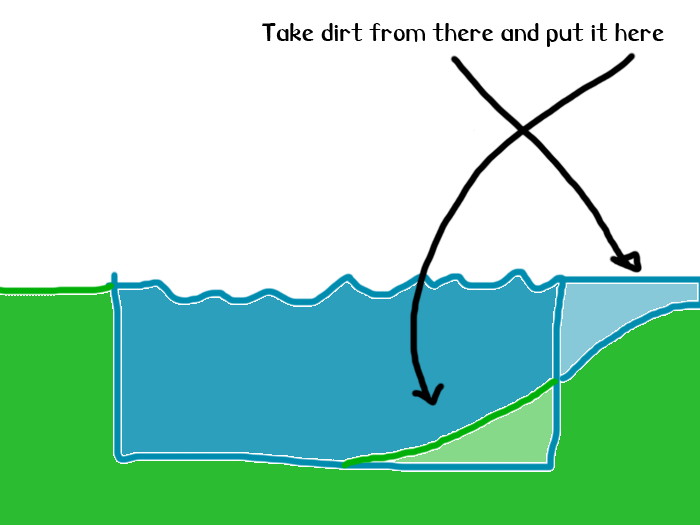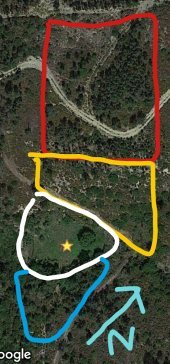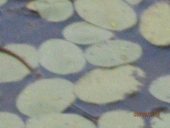
 1
1






 5
5




How Permies works: https://permies.com/wiki/34193/permies-works-links-threads
My projects on Skye: The tree field, Growing and landracing, perennial polycultures, "Don't dream it - be it! "
 5
5




Invasive plants are Earth's way of insisting we notice her medicines. Stephen Herrod Buhner
Everyone learns what works by learning what doesn't work. Stephen Herrod Buhner
 4
4




 4
4




 8
8




 6
6




could be an important clue. Is there any chance that your pond is getting runoff from the corn field? Corn fields tend to have high nitrogen runoff which would certainly make the duck-weed happy. Adding fish would have exactly the wrong effect, because they would add more nitrogen, not remove it. Harvesting some fish, even for animal feed, would remove nitrogen, but probably not fast enough to re-balance the pond. Harvesting the duck-weed would be more helpful as every time you remove it from the water, you are removing the nitrogen it represents.I think that's also why the duckweeds are thriving, close to corn and grass fields.
Visit Redhawk's soil series: https://permies.com/wiki/redhawk-soil
How permies.com works: https://permies.com/wiki/34193/permies-works-links-threads
 6
6




No wood, including pine, can kill fish if it has been dead and sitting in the sun for even a few months. There is NO wood which has been weathered by even a few months of exposure to the elements which is poisonous to fish. NONE.
...
There are some organic compounds (“turpentine”) in freshly cut pine wood (so called “sap”). These pine compounds are toxic to fish but all are very pungent. The toxic polyoxyphenols in wood such as cedar which gives this wood its insect resistant properties are also very pungent. All these compounds will evaporate from any dead wood exposed to the sun and the elements pretty quickly. But fresh cedar can be a problem, as can fresh pine.
 8
8




I am only one, but still I am one. I cannot do everything, but still I can do something; and because I cannot do everything, I will not refuse to do something that I can do. (E.E.Hale)
 2
2






 6
6




P. Degen wrote:As I said, I got 2 pine trees out of the pond, I also raking sometimes the leaves with an own build hand rake to one side. The plot is in a nature habitat, so I can't do much about it. They won't give permits that easily, But I heard from others around the area, they never check. So do what you want, but no heavy machines. That's why I handracke it by hand and rope. It will take me at least 5 years. At least it is relaxing meditative work for an 1hr a day haha.... My plan is to shorten in time the pond in length, cuz so many leaves are in the water.
“Action on behalf of life transforms. Because the relationship between self and the world is reciprocal, it is not a question of first getting enlightened or saved and then acting. As we work to heal the earth, the earth heals us.” ~ Robin Wall Kimmerer
 5
5




Invasive plants are Earth's way of insisting we notice her medicines. Stephen Herrod Buhner
Everyone learns what works by learning what doesn't work. Stephen Herrod Buhner
 5
5




Anne Miller wrote:
I also read that fish will help clean the pond so once you get all the other measures going to clean the water, maybe 2 or 3 years, please then consider some fish after determining that the water is safe for fish.
I am only one, but still I am one. I cannot do everything, but still I can do something; and because I cannot do everything, I will not refuse to do something that I can do. (E.E.Hale)
 5
5




Living a life that requires no vacation.




When in doubt, doubt the doubt.
 4
4




Anita Martin wrote:To me it looks like the pond has very steep banks (word?). There is no zone of shallow water with all the beneficial compounds of local plants and wildlife.
If that is the case, you could try to dig some of the steep walls off to allow for that shallow zone, and then plant some of those plants that make the pond look more natural. You should have lots of nurseries available as the Dutch have some famous nature gardeners like Piet Oudolf.
Stacy Witscher wrote: Try to get a bucket of water from a natural pond nearby to impregnate your pond with all the beneficial microorganisms that will feed on the plant debris and thus clear it up. A natural pond also shows cycles of clear water and turbid water, it is totally normal. Only if the pond is stinky I would be bothered.
Stacy Witscher wrote: I'm not trying to argue but we do have Ponderosa pines in the area around our pond. They aren't at waters edge as they don't like that much water, but they don't seem to have any negative effects on the pond.

 4
4




More importantly to me, in my pond, they turn into adorable micro-frogs that grow up into tree-frogs that visit my garden and blink at me when I suddenly come face-to-face with one napping on a leaf!Native tadpoles can take the roll of mid water small predictors (aka fish), and will help control bugs and create a living ecosystem,
Visit Redhawk's soil series: https://permies.com/wiki/redhawk-soil
How permies.com works: https://permies.com/wiki/34193/permies-works-links-threads
 3
3





John Daley Bendigo, Australia The Enemy of progress is the hope of a perfect plan
Benefits of rainfall collection https://permies.com/t/88043/benefits-rainfall-collection
GOOD DEBT/ BAD DEBT https://permies.com/t/179218/mortgages-good-debt-bad-debt
 4
4




 ..
..


 5
5




In modern times the only right way forward is to come back to nature.
 1
1




Lorinne Anderson: Specializing in sick, injured, orphaned and problem wildlife for over 20 years.
 3
3




Weeds are just plants with enough surplus will to live to withstand normal levels of gardening!--Alexandra Petri
 1
1




 4
4








Country oriented nerd with primary interests in alternate energy in particular solar. Dabble in gardening, trees, cob, soil building and a host of others.
 2
2




 2
2




 3
3




 3
3




I'm a market gardener in Wales, UK and live in the Radnor Hills. I live and work on land that is part of a rewilding farm owned by a Wildlife Trust. Loving my new polytunnel!
 2
2




I am only one, but still I am one. I cannot do everything, but still I can do something; and because I cannot do everything, I will not refuse to do something that I can do. (E.E.Hale)

|
Don't MAKE me come back there with this tiny ad:
The new kickstarter is now live!
https://www.kickstarter.com/projects/paulwheaton/garden-cards
|







